Why You Should Visit Berlin

canadastock/Shutterstock
Berlin is a bustling city with vivid nightlife and rich history. The cultural center has 170 museums to visit and more than 70,000 individual community gardens. Berlin is full of delicious food and some of the world’s best beer.
The outdoor spaces are beautiful and the city lends itself to foot exploration. It’s extremely walkable, perfect for taking a stroll on a sunny day! Street art and graffiti make any visit a little more colorful and creative here.
At night, Berlin transforms into an awesome party with fun, drinks, and music around every corner. The history and culture of the city is something that adds weight and meaning to your trip.
From the famed, defunct remainders of the Berlin Wall to outstanding cathedrals, statues, and memorials, there’s a lot to think about and learn as you walk the city’s streets.
Overall Best Time to Visit Berlin
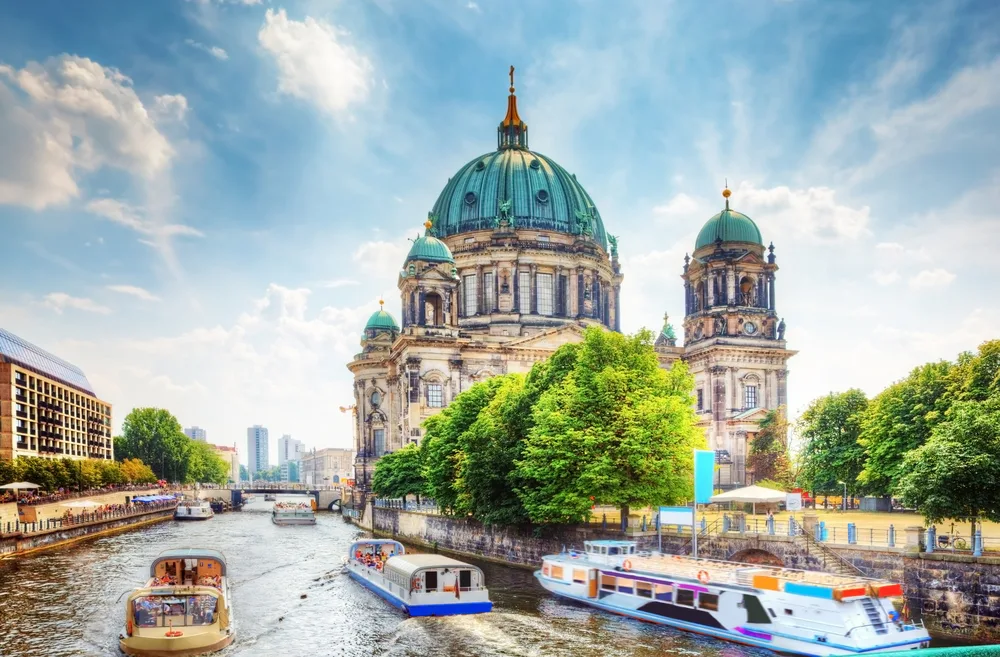
PHOTOCREO Michal Bednarek/Shutterstock
The overall best time to visit Berlin is between May and September. This period has the best weather and most moderate temperatures.
These factors allow you to enjoy traveling through the city and seeing the many outdoor sights comfortably. From late spring to early fall, you’re in for a treat in Berlin!
The days are long, providing plenty of daylight for exploration. The days can get up to 86 degrees Fahrenheit, so dressing in layers is wise. Walking the city is a joy during late spring, summer, and early fall.
However, every season has its charms and virtues. Some visitors prefer cooler weather to a balmy 86-degree day. Berlin has plenty to offer throughout the year.
Springtime in Berlin
Berlin springs are beautiful and moderate. Daily temperatures range from 59 to 77 degrees Fahrenheit. The city grows abundant beautiful flowers throughout the season. Berlin’s many parks and gardens burst with tulips and daffodils.
By May, all of Berlin will be in full bloom. The warm temperatures allow you to wander the city’s parks and gardens and explore the streets. Gallery Weekend runs from late April to early May, a fantastic reason to visit for art and culture enthusiasts.
Summer in Berlin
June, July, and August are Berlin’s warmest months. The city has abundant swimming lakes for visitors to cool off in. Berlin’s longest days land in June. June temperatures often exceed 70 degrees Fahrenheit. Berlin is full of exciting outdoor activities tailored to summertime.
The city offers bike tours, swimming, and abundant ice cream parlors. It’s the perfect setting for a dreamy summer visit. July is Berlin’s wettest month, averaging over nine days of rain. The month generally gets about 2 inches of rain.
Autumn in Berlin
If you’d rather delay your Berlin trip to cooler months, autumn in the city is beautiful and vibrantly colorful. The trees change colors, and the leaves lend the city bright, lively hues.
October weather is dry but cool. Temperatures range from 48 to 59 degrees Fahrenheit. These temperatures may seem chilly until you consider the wide range of physical activities Berlin offers visitors.
During Autumn, tourists enjoy:
- Kite flying
- Hiking
- Inline skating
- Biking
Autumn offers plenty of unique experiences in the autumn, including Berlin Art Week, the Festival of Lights, and The Berlin Marathon in late September. Berlin Beer Week occurs in September. The ten-day festival spreads throughout the city and includes beer tastings, food pairings, pub crawls, and karaoke.
Cheapest Time to Visit Berlin

AR Pictures/Shutterstock
The cheapest time to visit Berlin is the winter months. January, February, March, and November all have lower rates for flights and hotels.
These are colder months, which tend to sideline tourism. However, the city still offers plenty during winter if you can handle the cold. Note that December rates are always a bit higher as people arrive to attend and see the city’s many Christmas attractions.
Not a fan of cold and snow? If you’re prepared to pay a bit more for more temperate weather, Berlin’s shoulder season is April through mid-June and September until Oktoberfest. The weather is warmer than in the winter, though still dicey.
Crowds are smaller, so you’ll be able to enjoy this city without needing to shoulder your way through busy crowds. If affordability is your primary determining factor, pay attention to any major festivals or events occurring.
Deals on Berlin Hotels
Hotels in Berlin offer their best nightly deals in January, July, August, and November. The average nightly hotel rates during these months run under $100.
February, March, May, and October rates run slightly higher. June, September, April, and near Christmas rates run the highest, averaging well over $150 per night.
Deals on Airfare to Berlin
Airfare is a crucial consideration for anyone traveling from a greater distance. Generally speaking, roundtrip flight costs linger around $500 to Berlin. January, May, September, and December see small spikes in prices.
Higher temperatures lead to higher plane ticket costs, so June, July, and August are the most expensive months to fly to Berlin. June is the most expensive month, costing just over $1,500, while July comes between $1,000 and $1,500.
August sees a dip, coming in just under $1,000. Red-eye flights, airline loyalty programs, and price comparison websites help you book the cheapest trip.
Least Busy Time to Visit Berlin
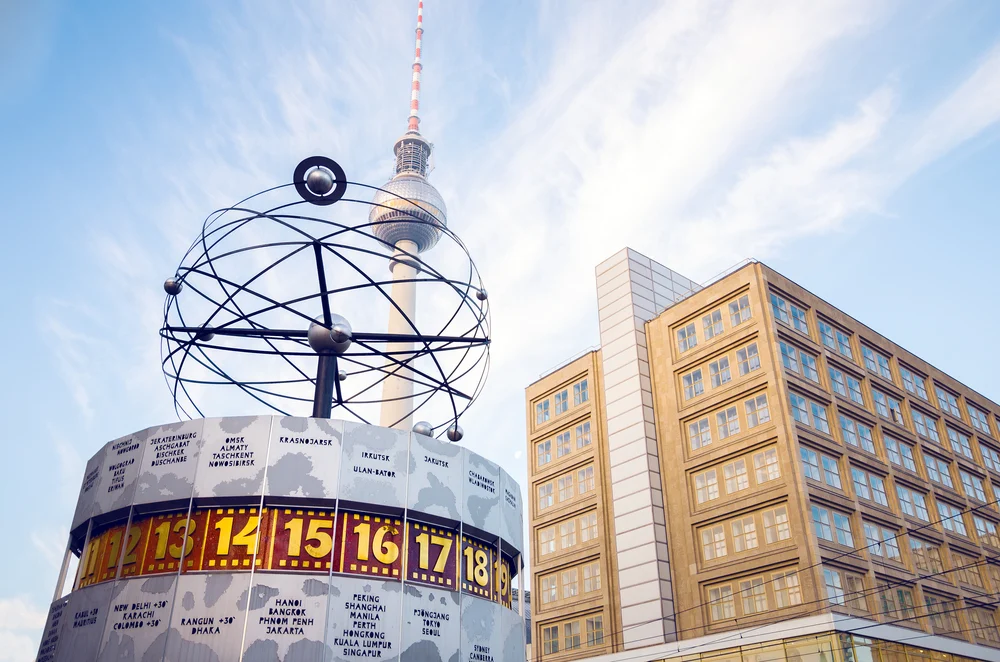
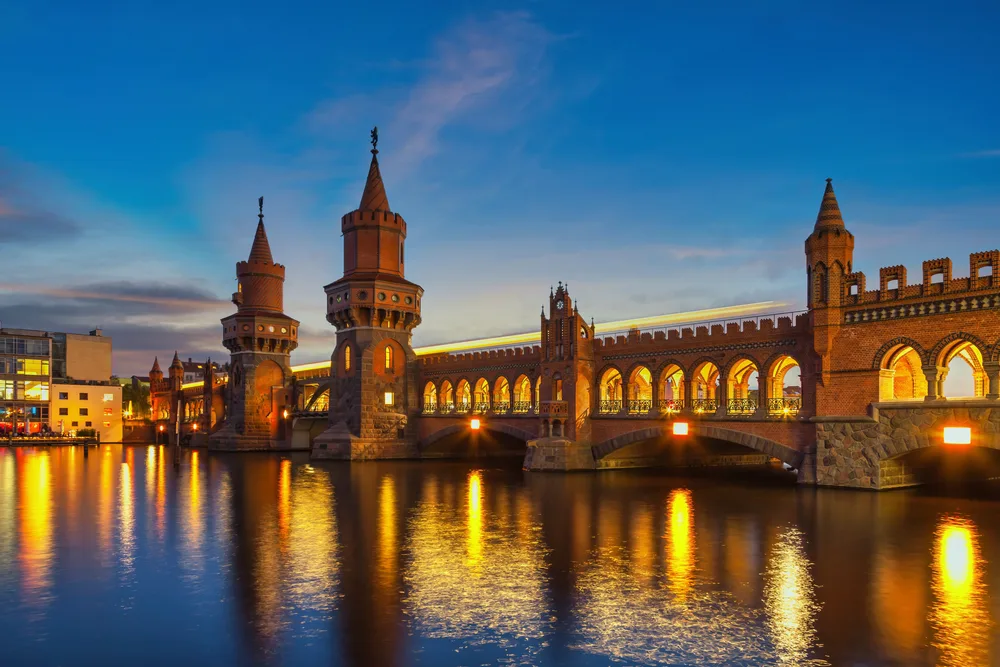
Noppasin Wongchum/Shutterstock
Berlin is quietest and less busy in the colder months from October to January. It’s a great time to go to avoid big crowds.
Tourists are drawn to the city’s many beautiful gardens, parks, and historic sites. The best way to travel the city is on foot, so visitors prefer warmer weather for their visit. That means the months of October, November, December, and January all experience relatively low levels of tourism.
These months are chilly but cheaper, making them perfect for a budget trip! If you want smaller crowds and clearer streets, visit Berlin in winter. May and June are Berlin’s busiest months by a rather large margin.
However, if you’re looking for medium crowds, March, April, July, and August have warmer temperatures and fall firmly in the middle for visitor numbers.
Worst Time to Visit Berlin
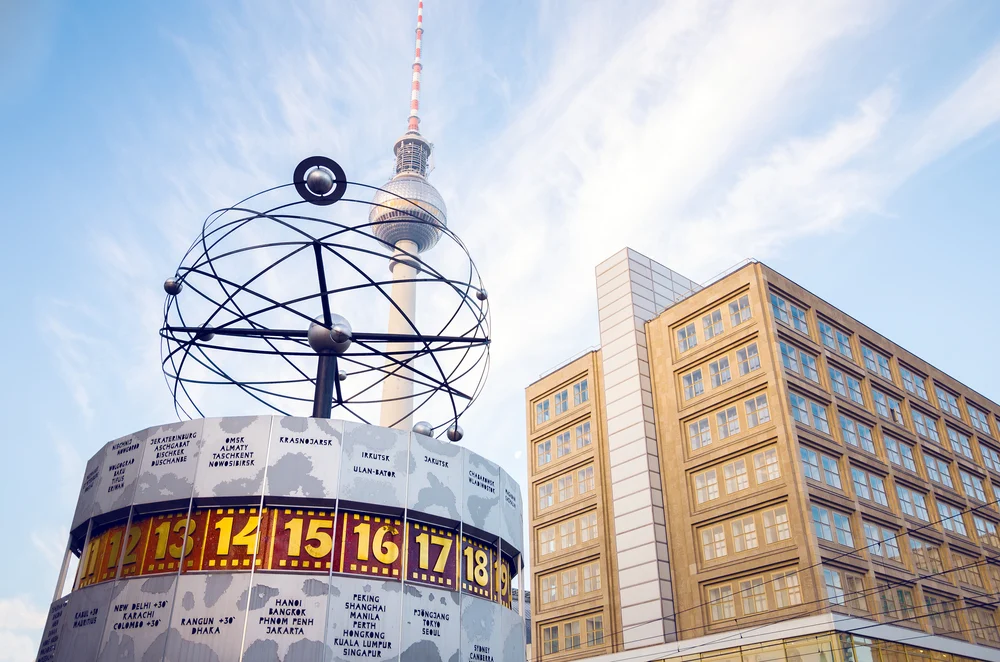
Daniel Vine Photography/Shutterstock
Winter from December to February is the worst time to visit Berlin due to the cold temperatures and short daylight hours.
Berlin is an ambulatory city with many outdoor attractions. The city’s winters are frigid, and you should avoid Berlin winters unless you enjoy the cold temperatures.
However, there is no truly bad time to visit Berlin. What period you avoid depends on what you’re hoping to experience or looking to evade.
April brings unpredictable weather. The month may be perfectly temperate and mild; however, there’s no guarantee you’ll get the weather you want. If your plans rely on dependable weather, avoid April.
Things to Consider
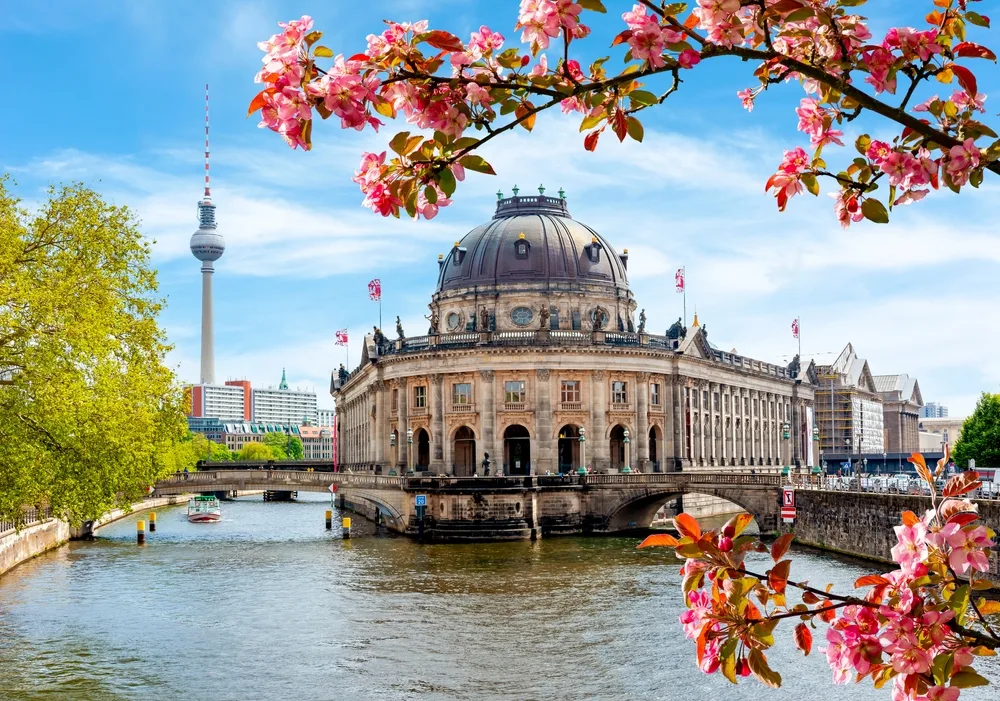
Mistervlad/Shutterstock
A few careful considerations will ensure you have the best and safest Berlin trip imaginable. While planning your visit, keep these things in mind:
- Public transit is reliable. Familiarize yourself with Berlin’s bus and train schedules and locations. Berlin provides several means of public transit, including buses, subways, trams, ferries, and taxis. It’s a very walkable city that’s easy to get around.
- Book free tickets for the popular Reichstag building. The Reichstag building is one of Berlin’s most historically significant buildings and draws large crowds. Registration is free and easy on the official website, but tickets book up quickly. Plan well in advance. Visitors flock to the attraction on weekends, so if at all possible, schedule your visit for mid-week.
- Berlin is vegan- and vegetarian-friendly. Visitors with dietary restrictions can eat freely. The city is among the most vegan-accessible worldwide, offering more than 50 vegan dining spots and over 300 vegan-friendly eateries. The city also has numerous vegan supermarkets and shops that sell vegan clothing and supplies.
- Tipping is standard. A 10 to 15 percent gratuity is generally considered polite. Diners don’t simply leave tips on tables in Berlin. If you leave a cash gratuity, hand it to your server, explaining how much of it is intended as a tip. If you’re paying with a credit card, offer a cash tip directly to your server. Though not required, tipping taxi drivers, cloakroom attendants, and hair stylists is appreciated and appropriate.
- Purchase a three-day museum pass. A three-day museum pass gives you admission to more than 30 of Berlin’s 170 museums over three consecutive days. A time slot must be booked through a museum’s website. Try to plan in advance since schedules book up quickly.
- Avoid conversations about World War II. Berliners are friendly people, but they will balk at mentions of their past. Many Germans still harbor feelings of generational guilt and responsibility for World War II. As a guest in their country, it is best not to broach such a sensitive and raw subject.
- Secure your belongings to avoid pickpockets. Berlin is a safe city, but it still has its share of opportunists. Busy areas, public transportation, and large events draw thieves. Keep a close eye on your bags and remain cognizant of your belongings. Valuables are safest near your body, where it’s harder for pickpockets to access them.
- Berlin is bike-friendly. The city is rife with cyclists. Berlin has designated bike lanes that pedestrians need to steer clear of. You’ll risk Berliners’ ire if you walk in the bike lane, so be aware of where you’re walking. Berlin has a rich bike-share community that can provide a fun means of exploring the city if you feel up to some physical activity.
Frequently Asked Questions

Sergii Figurnyi/Shutterstock
While we’ve covered the best time to visit Berlin for a range of different trip goals, a few frequently asked questions remain. Read through them to learn more and have the most successful trip possible!
How many days should I spend in Berlin?
You should spend no less than 5 days in Berlin to thoroughly see the city. Berlin is full of museums, history, and art.
You’ll need enough time to experience all the city has to offer, especially if you’re planning to bike or walk to visit the various attractions.
Is Berlin a walkable city?
Absolutely! Berlin is Germany’s most walkable city. Walk Score granted Berlin a score of 97 out of 100 points. Get out and stretch your legs while you see the sights here.
Is Berlin friendly to tourists?
Berliners are very welcoming to tourists. Germans are personable and friendly and always prepared to welcome visitors into their homes.
What is considered rude in Germany?
Berlin has its own code of conduct and politeness. To avoid offending your host city, don’t chew gum or put your hands in your pockets while in direct conversation. Keep your feet off of furniture and always be on time.
Is English spoken in Berlin?
Yes. Most Berliners are fluent in English, so English-speaking visitors will be able to communicate easily and freely.
So, What’s the Best Time to Visit Berlin?
Berlin is beautiful year-round, with lots of sights to see and museums to visit. However, the period between May and September is definitely the best time to visit Berlin.
These months have the most moderate temperatures and the greatest amounts of daylight. You’ll be able to comfortably walk the city and take in all the sights during the late spring through the early fall.
Go during the winter months for the cheapest accommodations and flights (except for December, when rates climb). October through January is a great time to go for smaller crowds!
Try to avoid visiting in winter if you hate the cold or want to spend a lot of time outdoors. April may be the worst time to go if you’re relying on good weather for your visit – it’s really unpredictable in spring.
You’re sure to have an amazing visit that enriches you and leaves you with great memories when you visit Berlin. Go during the best time, the cheapest time, or the least busy time – whatever suits your trip goals!
Source: https://t24hs.com








